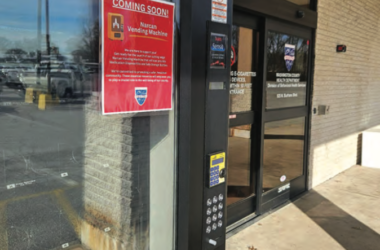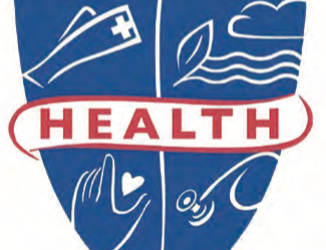by Kate Evans
Several new COVID variants have emerged that are vying for predominance in a late summer COVID surge that has brought new cases of the disease and a rise in hospitalizations across the country. Cases of COVID had declined earlier this year.
Deaths and hospitalizations from COVID have risen nationally but remain low against pandemic high points. Morgan County and Washington County are currently experiencing low levels of COVID-19 infection.
Medical assistant Becky Huff from River Bend Family Medicine in Hancock said that they’ve really seen an increase in COVID cases the past two weeks.
They’ve had six COVID cases each of those two weeks where before there was just a couple cases previously in the past month. None of their patients were hospitalized with COVID.
Variants
According to the Centers for Disease Control and Prevention (CDC) COVID data, the EG.5 variant (unofficially known as Eris) is now accounting for the highest percentage of COVID infections (21.5%) with the FL.1.5.1 strain causing 14.5% of the cases and the XBB.1.16 strain accounting for 9.2% of cases.
The Eris variant was first identified in February and has been found in more than 50 countries as of early August. A new variant strain BA.28.6 has just been discovered and is of increasing concern because of its many mutations.
With the uptick in COVID cases, the same preventative measures still work against the virus and its variants. These are frequent handwashing, mask-wearing, avoiding crowded indoor places and getting tested for COVID if you feel ill and have symptoms.
Health officials urge that those who are at high risk of complications from COVID adopt those measures.
Increased COVID-19 activity is expected this fall and winter as respiratory illnesses circulate when people move indoors more and gather over the holidays. Anti-viral treatments such as Paxlovid are available and can keep COVID symptoms from becoming severe.
New COVID vaccines
New COVID-19 vaccines that are effective against the new variants should be available by mid-to-late September. Pfizer Bio-tech, Moderna and Novavax have new vaccines that target the XBB.1.5 strain to more closely match different circulating virus strains.
The new vaccines should be available at public health departments, federally qualified health centers, pharmacies and physicians offices.
For most people, the shots will be free and they’ll be able to have the vaccines covered by their health insurance without co-pays. Those that don’t have health insurance can get COVID vaccines for free through government programs.
Up to date on vaccine?
Health officials say that it’s vital to get vaccinated against COVID-19 and be up to date on your boosters. Everyone six years old and up should get one updated Pfizer-BioN Tech or Moderna COVID-19 vaccine boosters to be up to date, according to the CDC.
Adults age 65 and older can get a second dose of the updated Pfizer-BioNTech or Moderna COVID-19 vaccine booster.
Those who are moderately or severely immunocompromised may get additional doses of the updated PfizerBioNTech or Moderna COVID-19 vaccines.
Boost now or later?
Unvaccinated people or undervaccinated individuals may want to consider getting the COVID shots that are available now. However, they could experience delays for when they want to receive the new vaccines later. Talk to your doctor about whether you should wait for the new COVID vaccine to come out or get your booster shot now with the rise in COVID cases.
In June, the CDC also approved a new vaccine for RSV (respiratory syncytial virus) for adults over age 60 who are at risk of getting very ill from RSV , if they have their doctor’ s recommendation.
Other advice
Flu season will soon be upon us and so will a host of respiratory infections such as colds, seasonal influenza and RSV. Preventing COVID19, flu and RSV involves the same measures.
Stay home when sick, except to get medical care.
Cover your coughs and sneezes with a tissue or your upper shirt sleeve-not your hands.
Wash your hands frequently with soap and water for at least 20 seconds.
Don’t send a sick child to school or daycare.
Avoid close contact with others, such as kissing, shaking hands and sharing cups and eating utensils.
Clean and disinfect frequently touched surfaces and items such as doorknobs, telephones, counter-tops, cell phones and keyboards.
Wear a mask if you have symptoms, a positive test or exposure to someone with COVID-19. Get tested if you have symptoms. Home tests are available over the counter at pharmacies.
Isolate from others for five days if you test positive for COVID. Wear a mask through day 10 if around others at home or in public.
Wear a face mask indoors in public places to protect yourself and others when county COVID-19 transmission rates are at high or substantial levels, if you are at high risk of serious illness from COVID-19 or if you are immunocompromised.
Wear a mask at any time as a precaution to protect yourself and others.
Keep your distance from others, avoid large gatherings and get vaccinated for both COVID-19 and the flu.




